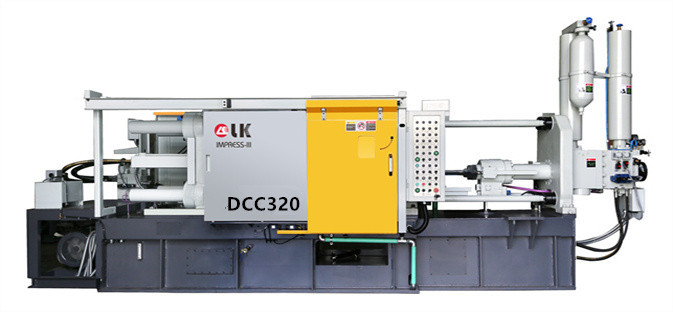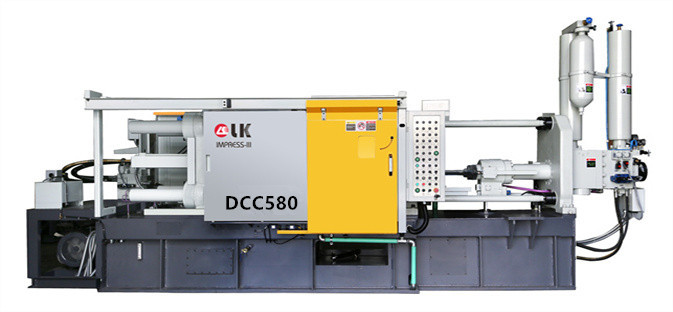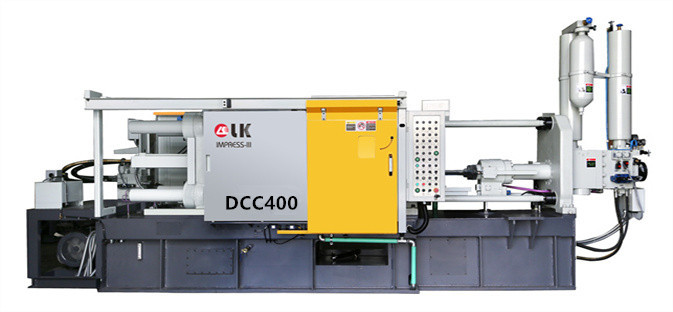Which Casting Method is the Best for Making Zinc Castings?
LK Die Casting Machine / 2024-07-04 09:06:39
Introduction
Zinc castings are widely used in many industries, such as automobile manufacturing, electronic equipment, building hardware, etc. Choosing the right casting method
is essential to producing high-quality zinc castings. This article will introduce several common zinc casting methods and analyze which method is best for making
zinc castings.
Common zinc casting methods
Sand casting
Centrifugal casting
Investment casting
Continuous casting
Die casting

Principle
Die casting is to inject molten zinc alloy into a metal mold under high pressure so that it cools and solidifies rapidly to form parts of the desired shape.
Advantages
High precision: die castings have precise dimensions and high surface finish.
High efficiency: suitable for mass production, low production cost per piece.
Complexity: parts with complex shapes can be produced.
Disadvantages
High mold cost: large initial investment.
Material limitations: mainly used for non-ferrous metal alloys such as zinc, aluminum, and magnesium.
Sand casting
Principle
Sand casting is to pour molten zinc alloy into a sand mold and take out the casting after it cools and solidifies. Sand molds can be used once or repeatedly.
Advantages
Flexibility: Suitable for small batch production and large castings.
Low cost: The mold manufacturing cost is low.
Disadvantages
Poor surface quality: The surface of the casting is rough and needs to be processed later.
Low precision: The dimensional accuracy and shape complexity are not as good as die casting.
Centrifugal casting
Principle
Centrifugal casting is to injecting of molten zinc alloy into a high-speed rotating mold, and the metal is evenly distributed and formed into casting through
centrifugal force.
Advantages
Uniformity: The casting has high density and few internal defects.
Suitable for round castings: such as pipes, sleeves, etc.
Disadvantages
Shape restrictions: Mainly used for cylindrical castings.
High equipment cost: Special equipment is required.
Investment casting
Principle
Investment casting (lost wax casting) is coating the wax mold with refractory material to form a shell mold, then melting the wax, pouring the molten zinc
alloy into the shell mold, and take out the casting after it cools and solidifies.
Advantages
High precision: Suitable for the production of complex and fine parts.
Good surface quality: the casting surface is smooth and almost no subsequent processing is required.
Disadvantages
Complex process: long production cycle and high cost.
Suitable for small batch production: cost is not economical for large-scale production.
Continuous casting
Principle
Continuous casting is continuously injecting molten zinc alloy into a continuously moving mold to form a long strip casting and then cutting it into different
lengths as needed.
Advantages
High efficiency: suitable for large-scale production of long strip parts.
Good uniformity: stable casting quality and few defects.
Disadvantages
Shape restrictions: mainly used for long strip castings with simple shapes.
Large equipment investment: continuous casting equipment is required.

Comparison and analysis
According to the characteristics of the above casting methods, it can be seen that:
Die casting is the most commonly used method for manufacturing zinc castings, especially suitable for large-scale production of high-precision and complex-shaped
parts.
Although the mold cost is high, the single-piece production cost is low and the efficiency is high, which is the best choice for large-scale industrial
production.
Sand casting is suitable for small-scale production and large castings. The mold cost is low, but the precision and surface quality are poor, which is suitable
for products with low surface requirements.
Centrifugal casting is suitable for the production of cylindrical castings, with high density and good quality, but limited shape.
Investment casting is suitable for the production of fine and complex small batch parts, with complex processes and high costs, and is suitable for high-end
precision castings.
Continuous casting is suitable for the production of long and simple parts, with high efficiency, but limited shape and large equipment investment.

Conclusion
Considering factors such as the precision, complexity, production efficiency, and cost of the castings, die casting is the best method for manufacturing zinc
castings.
The die-casting process can produce high-precision and high-quality zinc castings, which are suitable for mass production and have significant economic benefits.
For zinc castings that require high precision and complex shapes, die casting is undoubtedly the best choice.
Through the introduction of this article, it is hoped that readers can clearly understand the advantages and disadvantages of various zinc casting methods, and
choose the most suitable casting method according to specific needs to achieve the best production effect and economic benefits.
Contact LK Egypt to learn more info about the die-casting machine
LKAGENT OFFICE DCM
Address: Industry Zone, South of Port Said Kebly, Egypt
https://www.zazdiecasting.com/
Phone: +86 13598704163
Mobile: +20 101 304 3317 +20 150 181 8310
Email: jack@zazmae.com ahmedmahmoud@zazmae.com
#die cast tooling
#trivalent chromate
#rapid prototype casting
#a360 aluminum
#aluminum caster
#aluminum prototype
#ideal 55 slider parts
#density of aluminum kg/mm3
#magnesium sheet metal
#parts of a metal gate
#subcontracting of screw machining for the luxury sector
#wall aluminum
#die casting tooling
#tooling for die casting
#density of aluminium in kg mm3
#clear chromate
#es casting metals
#gating material
#prototype aluminum
#sigma castings
#subcontracting of screw-machining for household appliances
#we squeeze to please machine
#aluminium gravity die casting
#aluminum part
#aluminum rapid prototyping
#nickel casting
#plunger tip for die casting machine
#rapid prototyping aluminium
OTHER CONTENT
-

2024-09-19 14:16:15 LK Cold Chamber Die Casting Machine DCC900 Locking Force: 9000KN Die Height: 400-1000mm Space Between Tie Bars: 930x930mm Shot Weight: 13.5Kg Casting Area Max:2250c㎡
More -

2024-09-19 14:11:06 LK Cold Chamber Die Casting Machine DCC280 Locking Force: 2800KN Die Height: 250-650mm Space Between Tie Bars: 560x560mm Shot Weight: 2.9Kg Casting Area Max:700c㎡
More -

2024-09-19 10:23:07 LK Cold Chamber Die Casting Machine DCC580 Locking Force: 5000KN Die Heigh: 350-850mm Space Between Tie Bars: 760x760mm Shot Weight: 6.9Kg Casting Area Max:1250c㎡
More -

2024-09-19 10:11:20 LK Cold Chamber Die Casting Machine DCC400 Locking Force: 4000KN Die Height: 300-700mm Space Between Tie Bars: 669x669mm Shot Weight: 4.7Kg Casting Area Max:1000c㎡
More

